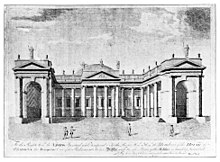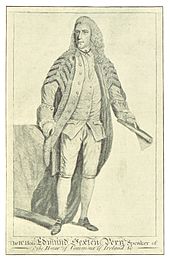Ardee was a constituency represented in the Irish House of Commons from 1378 to 1801.
Antrim was a borough constituency which elected two MPs to the Irish House of Commons, the house of representatives of the Kingdom of Ireland.
Baltimore was a potwalloper constituency represented in the Irish House of Commons from 1614 to 1801.
Castlemartyr was a constituency represented in the Irish House of Commons from 1676 to 1800.
Carlow was a constituency representing the borough of Carlow in the Irish House of Commons, the lower house in the Irish Parliament of the Kingdom of Ireland. It returned two members to the Parliament of Ireland from 1613 to 1800.
Youghal was a parliamentary borough represented in the Irish House of Commons until its abolition on 1 January 1801. It was a corporation with burgesses and freemen.
Bandonbridge was a constituency represented in the Irish House of Commons until its abolition on 1 January 1801.
Rathcormack was a constituency represented in the Irish House of Commons from 1611 to 1800. It was a mix of potwalloping and a Manor Borough established by charter and remained tied to the borough and surrounding area. The franchise was vested in the £5 and until 1793, Protestant freeholders and after 1782 a year's residence was necessary. It was disenfranchised on the 1 January 1801 on the coming into force of the Acts of Union 1800 and compensation of £15,000 was paid to the representatives of the Tonson family.
Thomastown was a constituency represented in the Irish House of Commons until 1800. Following the Acts of Union 1800 the borough was disenfranchised.
Athy was a constituency represented in the Irish House of Commons until its abolition on 1 January 1801. Following the Acts of Union 1800 the borough was disenfranchised.
Bannow was a constituency represented in the Irish House of Commons until its abolition on 1 January 1801.
Ardfert was a constituency represented in the House of Commons of the Parliament of Ireland until the Acts of Union 1800.
Dingle was a constituency represented in the Irish House of Commons until its abolition on 1 January 1801.
County Kerry was a constituency represented in the Irish House of Commons until its abolition on 1 January 1801. Following the Acts of Union 1800 the county retained two seats.
Waterford City was a constituency represented in the Irish House of Commons from 1264 to 1800. Following the Act of Union of 1800 the borough retained one seat.
County Westmeath was a constituency represented in the Irish House of Commons until the Acts of Union in 1800. Between 1725 and 1793 Catholics and those married to Catholics could not vote. Under the terms of the Acts of Union 1800, it was succeeded by the Westminter constituency of County Westmeath.
County Cork was a constituency represented in the Irish House of Commons until its abolition on 1 January 1801.
County Armagh was a constituency represented in the Irish House of Commons, the house of representatives of the Kingdom of Ireland, until 1800.
Newcastle was a constituency represented in the Irish House of Commons to 1801.







